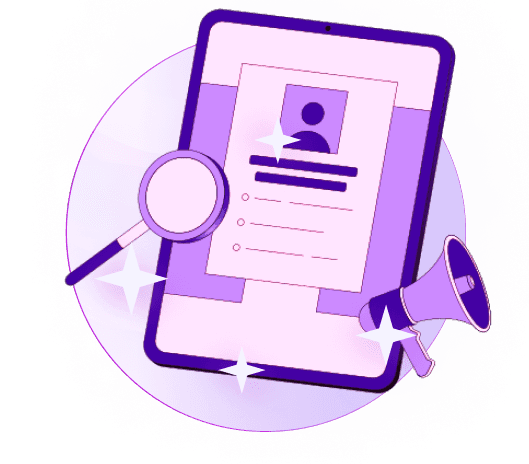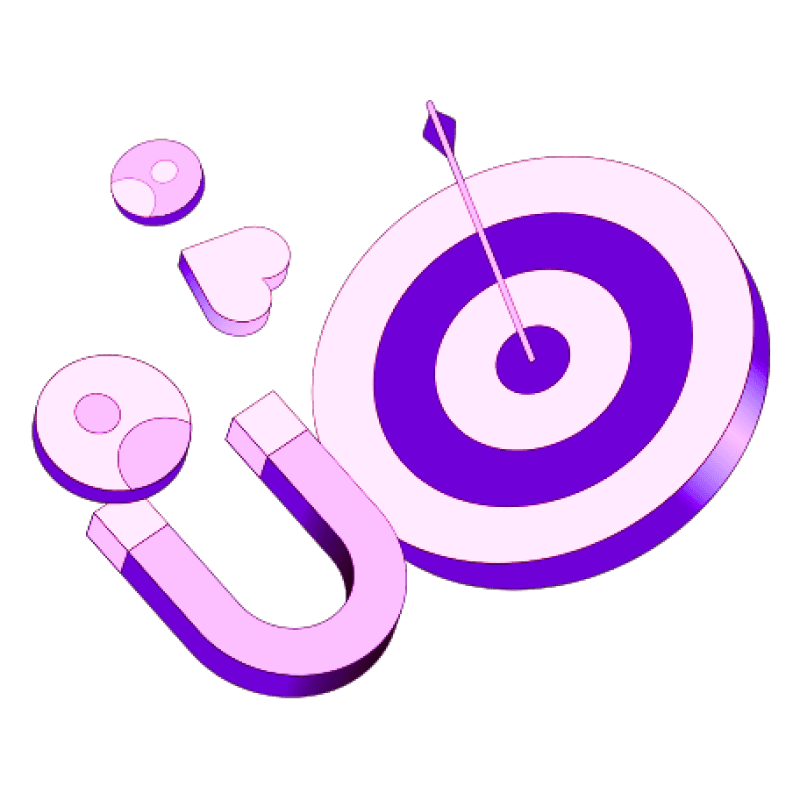Blogs
Articles

What is an AI SDR? Role, Benefits & How It Works in 2025
SDR AI stands ready to transform the sales landscape. Back in 2023, generative AI technologies powered less than 5% of B2B sales activities. Experts project this number to surge to 60% by 2028.
Traditional sales teams face mounting challenges that make this rapid change inevitable. The numbers tell a stark story: all but one of these sales representatives fail to reach 90% of their quota. SDR turnover paints an even grimmer picture - 52% of staff leave within their first year, and the average tenure barely reaches 14 months.
What makes an SDR tick, and how does AI reshape their role? Sales Development Representatives traditionally qualify leads and handle prospecting. The AI-powered virtual SDR now automates more than 80% of these manual tasks. These digital assistants work round the clock to capture every lead across time zones.
Numbers prove the value proposition. Companies that respond within five minutes are 21 times more likely to convert leads. Human teams struggle with this benchmark, yet AI SDR automation handles it with ease. The results speak volumes: AI SDRs can propel development up to 10x while cutting operational costs substantially.
This piece will show you how to implement AI SDRs in your sales workflow. You'll learn the core differences between human and AI SDRs and ways to tap into their full potential while understanding their limitations. Let's take a closer look!
What is an AI SDR and How Does It Work?
AI SDRs work as digital sales professionals in your team. They handle tasks that human Sales Development Representatives typically manage. These AI-powered agents automate top-of-funnel activities like lead qualification, outreach, and engagement. This lets your human sales team focus on creative problem-solving and building relationships.
Understanding the role of a virtual SDR
Virtual SDRs act as tireless digital assistants to boost your sales efforts. Human reps work fixed hours, but AI SDRs run 24/7 and reshape the scene of your sales cycles into a process that never stops. They capture leads at scale and prepare you for spikes in lead volume because they can multitask at levels impossible for human teams.
Your AI SDR takes care of prospecting, cold outreach, qualification through discovery questions, meeting scheduling, and automatic CRM updates. The entire sales team gets complete visibility.
How AI SDRs automate the SDR process
AI SDRs transform your workflow by automating several critical processes:
Personalized communication: They craft tailored emails, messages, and follow-ups using CRM data and work around the clock to keep leads engaged
Lead qualification: They study responses and engagement to determine if leads are ready for sales
Meeting scheduling: AI SDRs book meetings directly into your calendar when prospects show interest
CRM management: They track interactions and add context notes automatically
Human SDRs can spend more time having meaningful conversations with high-potential prospects, which improves conversion rates.
Key technologies behind AI SDRs
Several advanced technologies power virtual SDRs:
Machine Learning helps AI SDRs learn from past data, spot patterns, and get better over time. They become more skilled at finding leads likely to convert and fine-tune their communication strategies.
Natural Language Processing (NLP) lets them understand and respond to human language naturally. AI SDRs use NLP to create personalized responses, follow-up messages, and have conversations that sound human.
Predictive analytics spots trends and predicts future sales outcomes by analyzing customer behavior and past interactions.
These technologies merge with your existing CRM systems and sales tools to provide complete support throughout your sales process.
AI SDRs vs Human SDRs: What’s the Difference?
AI and human SDRs each bring unique capabilities that help teams optimize sales performance. Their distinct advantages create opportunities for mutually beneficial alliances rather than competition.
Strengths of AI in automation and scale
AI SDRs excel at repetitive tasks with remarkable consistency. They process thousands of leads simultaneously without getting tired and maintain precision throughout. These virtual agents work around the clock to give leads immediate attention whatever the time zone or business hours.
The data processing capabilities of SDR AI tools stand out impressively. They analyze information so big that human reps might miss important patterns, which creates more accurate lead scoring models. AI SDRs handle up to 10 times more prospecting activities than humans.
Where human SDRs still shine
Human SDRs have emotional intelligence that AI can't copy yet. They read subtle conversational cues, adapt to unexpected objections, and build authentic relationships through shared experiences. Complex negotiations and high-value accounts need the human touch significantly.
Creativity belongs to humans exclusively. Human SDRs can think outside the box when prospects present unique challenges or unusual situations. They know how to empathize with customers' specific circumstances and build trust that technology can't match.
Why AI SDRs complement, not replace
The best approach combines AI and human strengths through mutually beneficial alliances. AI handles the original outreach and qualification at scale, while human SDRs focus on meaningful conversations with high-potential prospects. This creates an uninterrupted handoff system where each component excels at its strengths.
Organizations should see AI SDR tools as boosters of human capability rather than replacements to get optimal results. The perfect setup uses virtual SDRs to eliminate routine tasks. This frees human talent to use their unique abilities – building connections, solving complex problems, and closing deals through relationships.
How to Use AI SDRs in Your Sales Workflow
AI SDRs merge with your existing sales workflow to create a powerful hybrid approach. Technology handles repetitive tasks while your human team builds relationships and closes deals.
Outbound prospecting and cold outreach
AI SDRs shine at outbound sales activities. They take over routine prospecting tasks that usually eat up 20% of a salesperson's time. These virtual assistants automatically find leads based on your ideal customer profile. They analyze website and social profiles, then craft customized messages across multiple channels.
Most AI SDR platforms work with email sequences, LinkedIn outreach, and SMS campaigns. This maintains consistent follow-up without manual work. To name just one example, tools like AiSDR create unique communication profiles for each lead. Every message becomes relevant to that prospect's specific situation.
Inbound lead qualification and follow-ups
AI SDRs respond to inbound leads right away. This quick response matters because leads are 21 times more likely to convert when contacted within five minutes. These tools talk to website visitors through chat or email. They answer questions and qualify prospects by asking targeted questions about budget, timeline, and needs.
AI SDRs figure out sales readiness by looking at responses and engagement patterns. They score leads automatically based on interactions. High-priority leads move quickly to human follow-up. Others enter nurturing sequences that keep them engaged until they're ready to buy.
CRM and communication tool integration
AI SDRs naturally merge with your existing tech stack:
They sync with CRMs like HubSpot and Salesforce to avoid reaching out to existing customers
They connect with unified communications platforms like Slack for instant notifications
They log all interactions automatically, keeping your database current without manual entry
This integration gives your entire sales team visibility into AI-driven conversations. Prospects get a smooth experience throughout their buying process.
Automated task assignment and alerts
AI SDRs create automated workflows that optimize your sales process. The system creates task actions for team members when trigger events happen, like new lead submissions or positive responses.
You can set up AI SDRs to notify human reps when they need to step in. This might happen when prospects ask complex questions or show they're ready to buy. Your team stays in control of the strategy while AI handles routine tasks. This creates an ideal balance between automation and human expertise.
Benefits and Limitations of AI SDRs
AI SDRs bring amazing operational capabilities to the table, but they also have limits that sales teams need to work around. Sales teams must understand both aspects to make these tools work while avoiding potential risks.
Scalability and 24/7 availability
AI SDRs excel at handling work at scale, managing thousands of leads at once unlike human teams. Human reps can only handle 40-50 outreach attempts each day, while AI systems process thousands. Companies can quickly adjust to market needs without spending much more money.
AI SDRs work non-stop to fill your pipeline. They talk to prospects any time - late nights, weekends, or different time zones. Your leads always get attention, and some companies saw their pipeline grow by 496% because of this round-the-clock work.
Cost savings and faster response times
Money-wise, AI SDRs cost just $500-$800 per month while human SDRs need $6,500-$9,800—you can save up to 70%. You'll spend less on day-to-day tasks too, since AI handles routine work without needing more staff.
Quick responses give AI another edge. Regular teams take about 42 hours to respond, but AI SDRs jump in within 10 minutes. Speed matters a lot - prospects are 9 times more likely to convert if you reach them within 5 minutes.
Challenges with personalization and data quality
AI SDRs shine in many ways but struggle with deep personalization. They can add names and company details to messages but lack the human touch needed for real connections. This becomes a real issue in complex sales that need subtle understanding.
Your AI system's success depends on good data quality. Bad or missing data creates irrelevant messages, fewer conversions, and might get your domain blacklisted. In fact, 81% of AI experts say their companies still face big data quality problems.
Compliance and ethical considerations
Ethics in AI needs careful attention to regulatory compliance. AI SDRs handle lots of personal data, which raises questions about privacy, security, and following GDPR and CCPA rules. The FCC made a new rule in 2024 - AI voice calls must tell prospects they're talking to AI right at the start.
Conclusion
AI SDRs mark a major change in sales development practices and provide a quickest way to tackle common sales challenges. These virtual assistants handle repetitive tasks while human representatives build relationships and close deals.
AI SDRs create value beyond just saving costs. They work non-stop, respond right away, and process thousands of leads at once to create massive scaling opportunities. Companies can grow steadily without adding more staff or increasing operational costs.
The path to success needs careful planning. AI SDRs excel at automation but don't deal very well with complex situations that need emotional intelligence and adaptability - qualities that human sales professionals bring. High-quality data and proper system integration determine how well they work.
Sales' future doesn't lie in picking between human or AI SDRs. It's about creating mutually beneficial alliances between them. This balanced approach lets machines handle scale and consistency while humans provide creativity and genuine connections.
Teams wanting to see how AI can transform their sales development process can explore Persana.ai. It offers specialized solutions built for B2B sales teams to boost their prospecting capabilities.
AI SDRs are powerful tools that solve key sales challenges and magnify your human team's capabilities when used wisely. Companies that understand this technology's potential and limits, using it strategically rather than replacing human talent completely, will lead the way forward.

Create Your Free Persana Account Today
Join 5000+ GTM leaders who are using Persana for their outbound needs.
How Persana increases your sales results
One of the most effective ways to ensure sales cycle consistency is by using AI-driven automation. A solution like Persana, and its AI SDR - Nia, helps you streamline significant parts of your sales process, including prospecting, outreach personalization, and follow-up.



